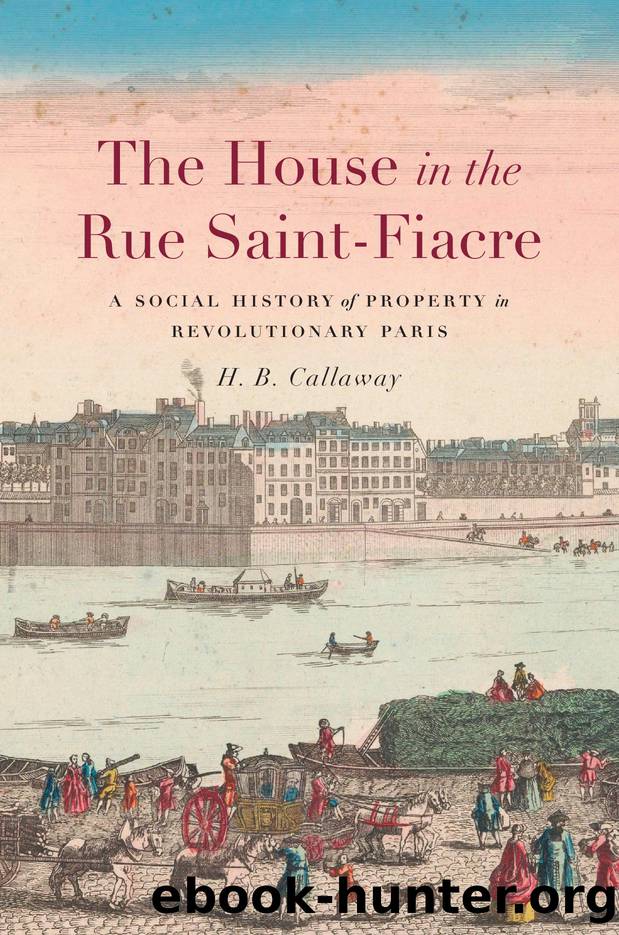The House in the Rue Saint-Fiacre by H. B. Callaway

Author:H. B. Callaway
Language: eng
Format: epub
Publisher: Harvard University Press
Inheritance Practices at the End of the Old Regime
Links between generations made it difficult for administrators to distinguish who, among the members of a family, really owned something. To ask who âreallyâ owned it, in fact, is clumsy. The Duc de la Trémoille and his son both owned their property. They simply had different claims to the same assets. The legal arrangements used to share assets among family members, based in customary law and unchanged in the Revolution, were actually quite clear on what each member of a family owned. A single asset could be shared by dividing different claimsâsuch as use versus underlying ownershipâor by creating fractional shares. Property âbelongedâ to several people at once, and yet each share was rigorously individual. In this sense, distinguishing between a regime of individual property and a communal approach to assetsâas lawmakers sought to doâdid not truly reflect the nature of family holdings either before or after the Revolution: property was both individual and shared at the same time. Families did not necessarily share resources out of sentimentality or a desire to help each other. Rather, managing family assets made it possible for a familyâs patrimony to support multiple households and multiple generations. This point further highlights how inadequately the idea of sharing captures the way families acted. Carefully delimiting the rights of each member allowed the family to maximize its assets.
The practices of the la Cour de Balleroy family exemplify the ways in which families shared property strategically across time.16 The family was targeted by the émigré laws after Charles-Auguste de la Cour, Marquis de Balleroy, was guillotined and his wife, Sophie lâEpineau, emigrated. The marriage contract of Charles-Augusteâs son, Philippe-Auguste, shows parental assets apportioned carefully to benefit both young and old simultaneously. Philippe Auguste, an only son, married Elisabeth-Jacqueline Maignard de la Vaupalière in April 1784.17 Like many couples, they signed a marriage contract that enumerated the financial settlement arranged by their parents.18 In the contract, the groomâs parents each settled annuities on their son, drawn on various funds. The military commission previously purchased for the groom by his father was also listed as part of the settlement. The bride received a dowry of 300,000 livres, to be paid in part to her husband in cash on the wedding day, and the rest to be delivered in installments of no less than 50,000 livres at will by her father. She was also guaranteed her inheritance portion in the future. A key element of the marriage contract was the way it allowed the parents to continue benefiting from their property while still supporting the young couple. This was made possible by offering many different forms of property, including cash, annuities, and assets in kind such as the military commission. One particular ownership claim is worth highlighting: the brideâs family promised to lodge the newlyweds in their home, rent-free, for three years.19 Essentially the gift was a three-year lease, which represented a form of ownership claim on the parentsâ home. Significantly, however, promises of cash in this contract were secured against the parentsâ land.
Download
This site does not store any files on its server. We only index and link to content provided by other sites. Please contact the content providers to delete copyright contents if any and email us, we'll remove relevant links or contents immediately.
Women and Jewish Marriage Negotiations in Early Modern Italy by Howard Tzvi Adelman(406)
Warrior King by Wilbur Smith(365)
18 real-life stories of serial killers and murderers with solved and unsolved killings from the USA, UK, Europe, and beyond. by Ben Oakley(284)
The Battle of Austerlitz by 50minutes(280)
Violence and Emotions in Early Modern Europe by Susan Broomhall;Sarah Finn;(274)
Who's Who in the Zulu War, 1879: The British by Adrian Greaves Ian Knight(271)
The American Crisis by Unknown(264)
Youth, Heroism and War Propaganda: Britain and the Young Maritime Hero, 1745â1820 by D. A. B. Ronald(238)
The Seeker by S. G. MacLean(229)
The Origins of French Absolutism, 1598-1661 by Alan James(218)
The Dutch East India Company and British East India Company: The History and Legacy of the Worldâs Most Famous Colonial Trade Companies by Charles River Editors(211)
The Traitor of Colditz by Robert Verkaik(200)
The Thirty Years War â Complete by Friedrich Schiller(199)
A Genius for Confusion by Richard M. Fried(198)
Invisible Worlds by Peter Marshall(198)
Fires of Faith by Catholic England under Mary Tudor(196)
Interest and Connection in the Eighteenth Century by Jacob Sider Jost(194)
The Opium Wars: Exploring the Addiction of Empires from Beginning to End by Ramos Adrian & Compacted History(193)
The Slave Trade in Africa by Simon Webb;(193)
